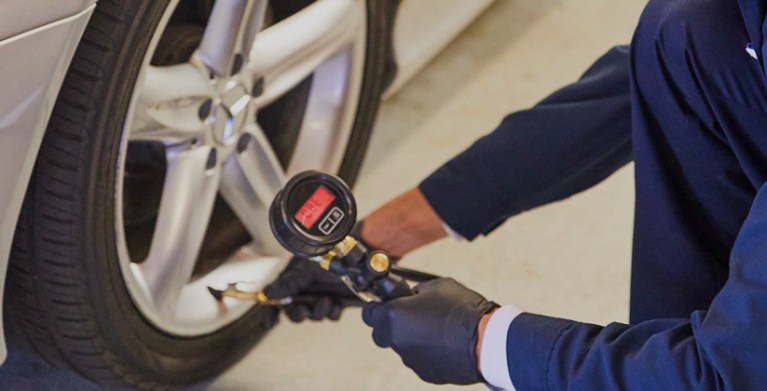Morris Tires: Where GMC Tire Service Fulfills High Quality
Morris Tires: Where GMC Tire Service Fulfills High Quality
Blog Article
Tire Solution: The Influence of Climate Condition
When it comes to making certain optimum performance and security when traveling, comprehending the effect of climate condition on tire solution is vital. From scorching warm to icy roads, each climate component can dramatically affect tire capability and general driving experience. By delving right into the effects of varying climate condition on tires, vehicle drivers can get valuable insights that might boost their automobile's efficiency and long life. In this conversation, we will certainly discover the complex connection between climate condition and tire solution, losing light on the relevance of weather-specific tire maintenance practices and considerations.
Warmth and Tire Efficiency
When revealed to heats, tires experience adjustments in efficiency that can considerably impact vehicle safety and security and handling. The warmth generated from prolonged driving or hot weather condition conditions causes the tire rubber to soften, bring about minimized step life and boosted wear. As the rubber comes to be softer, the tire's grasp on the road decreases, influencing braking ranges and overall traction. In extreme cases, extreme warm can also cause tire blowouts, posing an extreme safety and security risk to the vehicle and its passengers.

Winter Results
Cold weather conditions can have a substantial influence on tire performance and safety and security. As temperature levels decrease, tire rubber can harden, causing reduced grip on icy or snow-covered roads. In winter, tires might also shed air pressure extra rapidly, which can influence dealing with and gas efficiency. In addition, cold temperatures can create tire sidewalls to stiffen, increasing the threat of damages from holes or various other roadway hazards.
To alleviate the results of winter on tires, it is essential to on a regular basis inspect tire stress and inflate them to the maker's recommended levels. Making use of winter months or all-season tires designed for cold climate conditions can additionally enhance traction and grip on icy or snowy roads. Correct tire maintenance, consisting of regular assessments for wear and damage, becomes much more essential throughout cooler months to guarantee ideal efficiency and safety and security.
Rainy Issues Effect
Throughout rainy conditions, tire efficiency and security can be dramatically affected by the wet road surfaces and reduced exposure. The tread pattern of tires plays an essential role in keeping grip on wet roadways. Tires with damaged footsteps are a lot more susceptible to hydroplaning, where a layer of water constructs up in between the tire and the road surface, resulting in loss of traction. To battle this, chauffeurs need to on a regular basis check their tires for ample step depth and take into consideration buying tires especially designed for damp conditions.
In addition, rainy weather can also reduce presence, making it testing for drivers to see the roadway in look at these guys advance clearly (GMC Tire Service). In such problems, it is vital to adjust driving speeds accordingly and preserve a secure following distance to enable for abrupt stops. Effectively filled with air tires can also assist in maintaining control on wet roadways by giving better handling and hold
Snow and Tire Safety And Security
When driving in snowy conditions, having the right tires can make a substantial difference in security and efficiency. Winter season tires are made with special rubber compounds and step patterns to offer better traction on snow and ice contrasted to all-season tires.

It is vital to follow manufacturer instructions when using and setting up tire chains to stop damages to the tires and lorry. By selecting the right tires, keeping appropriate inflation, and considering extra traction aids like tire chains, motorists can improve their security when browsing snow-covered roadways.
Weather-Related Tire Upkeep
Weather-related tire upkeep includes an array of methods intended at ensuring optimal tire function and long life in various weather scenarios. One essential element of weather-related tire upkeep is tire pressure policy. Evaluating tire walk consistently and replacing tires when walk wear gets to a particular deepness is crucial for keeping grip and security in unfavorable weather condition.
Verdict
To conclude, climate condition have a look at more info considerable influence on tire efficiency and safety and security. From heat influencing tire stress and put on to chilly climate lowering traction, it is vital to take into consideration the weather when preserving and utilizing tires. Rainy conditions can decrease grip and result in hydroplaning, while snow can boost the danger of mishaps if tires are not appropriately geared up. Weather-related tire upkeep is important in guaranteeing optimal efficiency and safety on the roadways.
In this discussion, we will check out the elaborate connection between weather conditions and tire service, dropping light on the importance of weather-specific tire upkeep methods and factors to consider.

Report this page